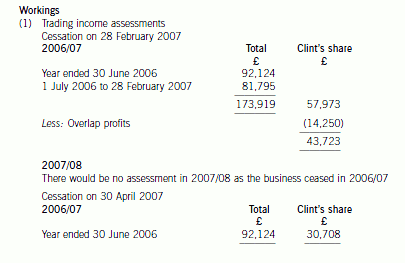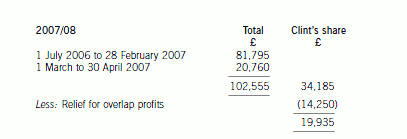甘肃省考生注意:最新ACCA考试新增题型和题型分析
发布时间:2020-01-10
随着国家相关政策的发布和改革,备受大家关注的ACCA考试也在近些年悄悄地发生着变化,尤其是考试题型的部分,这一部分51题库考试学习网建议各位备考ACCA的同学们提前了解一下,以此来有目的性地复习各科考试科目。那到底发生了怎么样的变化呢?且随51题库考试学习网一起了解了解:
首先就是在ACCA F阶段的一些新题型:
|
ACCA考试科目 |
考试题型 |
|
F5 F7 F9 |
15 x 2 mark 客观题 3 x 10 mark 案例客观题 2 x 20 mark 主观题 |
|
F6 (UK) |
15 x 2 mark 客观题 3 x 10 mark 案例客观题 1 x 10 mark 主观题 2 x 15 mark 主观题 |
|
F8 |
3 x 10 mark 案例客观题
1 x 30 mark 主观题 |
ACCA 机考题型介绍(主要是F阶段)
(一)客观题(Objective test questions/ OT questions)客观题是指这些单一的,题干较短的,并且自动判分的题目。每道客观题的分值为2分,考生必须回答的完全正确才可以得分,即使回答正确一部分,也不能得到分数。所以,考生要认真仔细的看问题,不要马虎大意
(二)案例客观题 (OT case questions)
案例客观题是ACCA引入的新题型,每道案例客观题都是由一组与一个案例相关的客观题组成的,因此要求考生从多个角度来思考一个案例。这种题型能很好的反映出考生将如何在实践中完成这些任务。
(三) 主观题 (Constructed response questions/ CR qustions)考生将使用电子表格程序和文字处理程序去完成主观题的回答。就像笔试中的主观题一样,答案最终将由专家判分。
以上就是ACCA考试F阶段的关于考试题型的介绍,如果你已经通过了F阶段的所有考试科目,那么下面对P阶段的题型分析建议你可以好好浏览~和F阶段相比,P阶段需要你付出的更多,需要更加加倍的努力才可以通过,因此备考的各位千万不要松懈~
ACCA P阶段题型分析
P1考试题型构成
Section A: 1 compulsory case study * 50 Marks;
Section B: Choice of 2 from 3 questions * (25 marks each)
Section A will be a compulsory case study question with typically four or five sub-requirements relating to the same scenario information. The question will usually assess and link a range of subject areas acrossthe syllabus. It will require students to demonstrate high-level capabilities to understand the complexities of the case and evaluate, relate and apply the information in the case study to the requirements.
Section B questions are more likely to assess a range of discrete subject areas from the main syllabus section headings. They may require evaluation and synthesis of information contained within short scenarios and application of this information to the question requirements.
ACCA P2考试题型构成
Section A will consist of one scenario based question worth 50 marks. It will deal with the preparation of consolidated financial statements including group statements of cash flows and with issues in financial reporting. A written part normally covering a particular accounting treatment and ethical and social issues in financial reporting.
Students will be required to answer two out of three questions in Section B, which will normally comprise two questions which will be scenario or case-study based and one essay question which may have some computational element. Section B could deal with any aspects of the syllabus. New accounting standards will feature prominently in this section on initial introduction.
ACCA P3考试题型构成
Section A: 1 compulsory case study * 50 Marks;
Section B: Choice of 2 from 3 questions * (25 marks each)
Section A will be a compulsory case study question with several requirements relating to the same scenario information. The question will usually assess and link several subject areas from across the syllabus, and will require you to demonstrate high-level capabilities to evaluate, relate and apply the information in the scenario to the question requirements. There will always be some financial or numerical data in the scenario and marks will be available for numerical analysis which supports your written argument.
Section B questions are more likely to examine discrete subject areas. They will be based on short scenarios, and you will be expected to apply information from the scenarios to the question requirements.
ACCA P4考试题型构成
Section A contains ONE compulsory question of 50 marks.
Section B is a choice of TWO from three questions, each carrying 25 marks. There are 3 hours for the exam, plus 15 minutes of reading time.
ACCA P5考试题型构成
Part A One compulsory question 50 marks.
Part B Two from three questions each of 25 marks
ACCA P7考试题型构成
The first 2 questions in the exam are compulsory and will be worth anywhere between 50% and 70%. The remaining 30% – 50% are divided between 2 from 3 other questions
辛勤奋战在学海,汗水扬起成功帆。无烟战场今日起,气定神闲退万军。心态良好细审题,才思敏捷答考卷。自信人生二百年,收获人生好前程。
最后51题库考试学习网提前预祝小伙伴们成功上岸!!加油!
下面小编为大家准备了 ACCA考试 的相关考题,供大家学习参考。
(b) Comment on the need for ethical guidance for accountants on money laundering. (4 marks)
(b) Need for ethical guidance
■ Accountants (firms and individuals) working in a country that criminalises money laundering are required to comply with
anti-money laundering legislation and failure to do so can lead to severe penalties. Guidance is needed because:
– legal requirements are onerous;
– money laundering is widely defined; and
– accountants may otherwise be used, unwittingly, to launder criminal funds.
■ Accountants need ethical guidance on matters where there is conflict between legal responsibilities and professional
responsibilities. In particular, professional accountants are bound by a duty of confidentiality to their clients. Guidance
is needed to explain:
– how statutory provisions give protection against criminal action for members in respect of their confidentiality
requirements;
– when client confidentiality over-ride provisions are available.
■ Further guidance is needed to explain the interaction between accountants’ responsibilities to report money laundering
offences and other reporting responsibilities, for example:
– reporting to regulators;
– auditor’s reports on financial statements (ISA 700);
– reports to those charged with governance (ISA 260);
– reporting misconduct by members of the same body.
■ Professional accountants are required to communicate with each other when there is a change in professional
appointment (i.e. ‘professional etiquette’). Additional ethical guidance is needed on how to respond to a ‘clearance’ letter
where a report of suspicion has been made (or is being contemplated) in respect of the client in question.
Tutorial note: Although the term ‘professional clearance’ is widely used, remember that there is no ‘clearance’ that the
incumbent accountant can give or withhold.
■ Ethical guidance is needed to make accountants working in countries that do not criminalise money laundering aware
of how anti-money laundering legislation may nevertheless affect them. Such accountants may commit an offence if,
for example, they conduct limited assignments or have meetings in a country having anti-money laundering legislation
(e.g. UK, Ireland, Singapore, Australia and the United States).
19 What is the company’s return on shareholders’ equity?
A 15/40 = 37·5%
B 20/100 = 20%
C 15/100 = 15%
D 20/150 = 13·3%
(ii) Analyse the effect of delaying the sale of the business of the Stiletto Partnership to Razor Ltd until
30 April 2007 on Clint’s income tax and national insurance position.
You are not required to prepare detailed calculations of his income tax or national insurance liabilities.
(4 marks)
(ii) The implications of delaying the sale of the business
The implications of delaying the sale of the business until 30 April would have been as follows:
– Clint would have received an additional two months of profits amounting to £6,920 (£20,760 x 1/3).
– Clint’s trading income in 2006/07 would have been reduced by £13,015 (£43,723 – £30,708), much of which
would have been subject to income tax at 40%. His additional trading income in 2007/08 of £19,935 would all
have been taxed at 10% and 22%.
– Clint is entitled to the personal age allowance of £7,280 in both years. However, it is abated by £1 for every £2
by which his total income exceeds £20,100. Once Clint’s total income exceeds £24,590 (£20,100 + ((£7,280
– £5,035) x 2)), his personal allowance will be reduced to the standard amount of £5,035. Accordingly, the
increased personal allowance would not be available in 2006/07 regardless of the year in which the business was
sold. It is available in 2007/08 (although part of it is wasted) but would not have been if the sale of the business
had been delayed.
– Clint’s class 4 national insurance contributions in 2006/07 would have been reduced due to the fall in the level
of his trading income. However, much of the saving would be at 1% only. Clint is not liable to class 4 national
insurance contributions in 2007/08 as he is 65 at the start of the year.
– Changing the date on which the business was sold would have had no effect on Clint’s class 2 liability as he is
not required to make class 2 contributions once he is 65 years old.


C Co uses material B, which has a current market price of $0·80 per kg. In a linear program, where the objective is to maximise profit, the shadow price of material B is $2 per kg. The following statements have been made:
(i) Contribution will be increased by $2 for each additional kg of material B purchased at the current market price
(ii) The maximum price which should be paid for an additional kg of material B is $2
(iii) Contribution will be increased by $1·20 for each additional kg of material B purchased at the current market price
(iv) The maximum price which should be paid for an additional kg of material B is $2·80
Which of the above statements is/are correct?
A.(ii) only
B.(ii) and (iii)
C.(i) only
D.(i) and (iv)
Statement (ii) is wrong as it reflects the common misconception that the shadow price is the maximum price which should be paid, rather than the maximum extra over the current purchase price.
Statement (iii) is wrong but could be thought to be correct if (ii) was wrongly assumed to be correct.
声明:本文内容由互联网用户自发贡献自行上传,本网站不拥有所有权,未作人工编辑处理,也不承担相关法律责任。如果您发现有涉嫌版权的内容,欢迎发送邮件至:contact@51tk.com 进行举报,并提供相关证据,工作人员会在5个工作日内联系你,一经查实,本站将立刻删除涉嫌侵权内容。
- 2020-01-10
- 2020-01-10
- 2019-12-29
- 2020-01-10
- 2020-04-29
- 2020-01-29
- 2020-01-10
- 2020-05-07
- 2020-01-10
- 2020-04-19
- 2020-04-15
- 2020-01-15
- 2020-04-21
- 2020-05-13
- 2020-03-08
- 2020-01-09
- 2019-07-20
- 2020-02-04
- 2020-01-10
- 2020-01-10
- 2020-03-07
- 2020-01-09
- 2020-01-30
- 2020-03-27
- 2020-04-30
- 2020-04-23
- 2020-05-08
- 2020-02-22
- 2020-05-05
- 2020-01-09